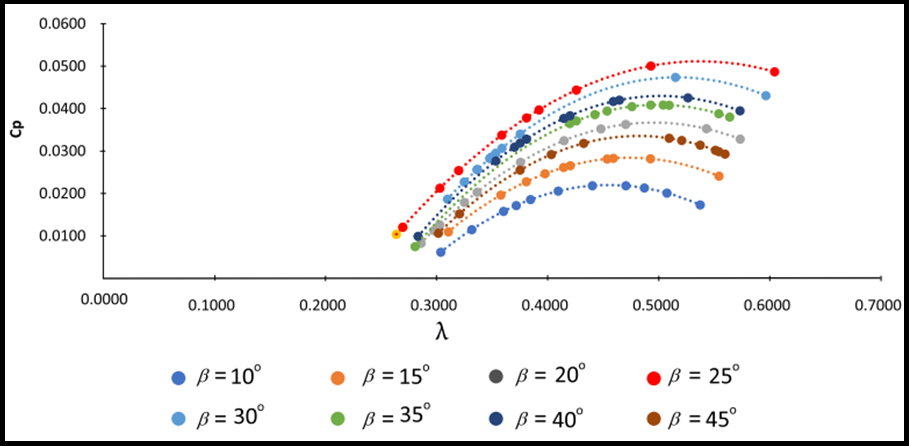Improving cross-axis wind turbine performance: A Lab-scale investigation of rotor size and blades number
Main Article Content
Abstract
Horizontal and vertical-axis wind turbines have long been used to generate electricity in open areas by utilizing horizontal wind flow. Under certain conditions, for example in multi-storey building areas, wind flows not only from horizontal but also vertical directions. Therefore, this research aims to develop a new turbine model known as a cross-axis to capture wind flow from horizontal and vertical directions around multi-storey buildings. Design, production, testing, and performance analysis are carried out in this project. The model is designed with a rotor diameter of 700 mm which has 5 vertical blades and 10 horizontal blades with a total height of 600 mm which is divided into two configurations, upper and lower. Performance analysis was carried out using a wind tunnel in a conditioned laboratory both in loaded and unloaded conditions. The output power of the wind turbine is measured using an electric dynamometer. The no-load test was applied to determine the time required to move from non-rotating to constant rotation at different speeds and horizontal blade angles. Meanwhile, the load test is used to determine the power coefficient at various speeds, horizontal blade pitch angles, and loads. The research results show that the time required to move from a non-rotating speed to a constant speed is influenced by the wind speed and the blade pitch angle. The power coefficient was also observed to be influenced by wind speed, blade pitch angle, and load. Furthermore, the shortest time to reach a constant rotation speed is around 20 seconds at a wind speed of 7.6 m/s and a blade pitch angle of 25°. The maximum power coefficient of the wind turbine was obtained at 5.2% at a wind speed of 7.6 m/s, blade pitch angle of 25°, and tip speed ratio of 0.5.
Downloads
Article Details

This work is licensed under a Creative Commons Attribution-NonCommercial 4.0 International License.

